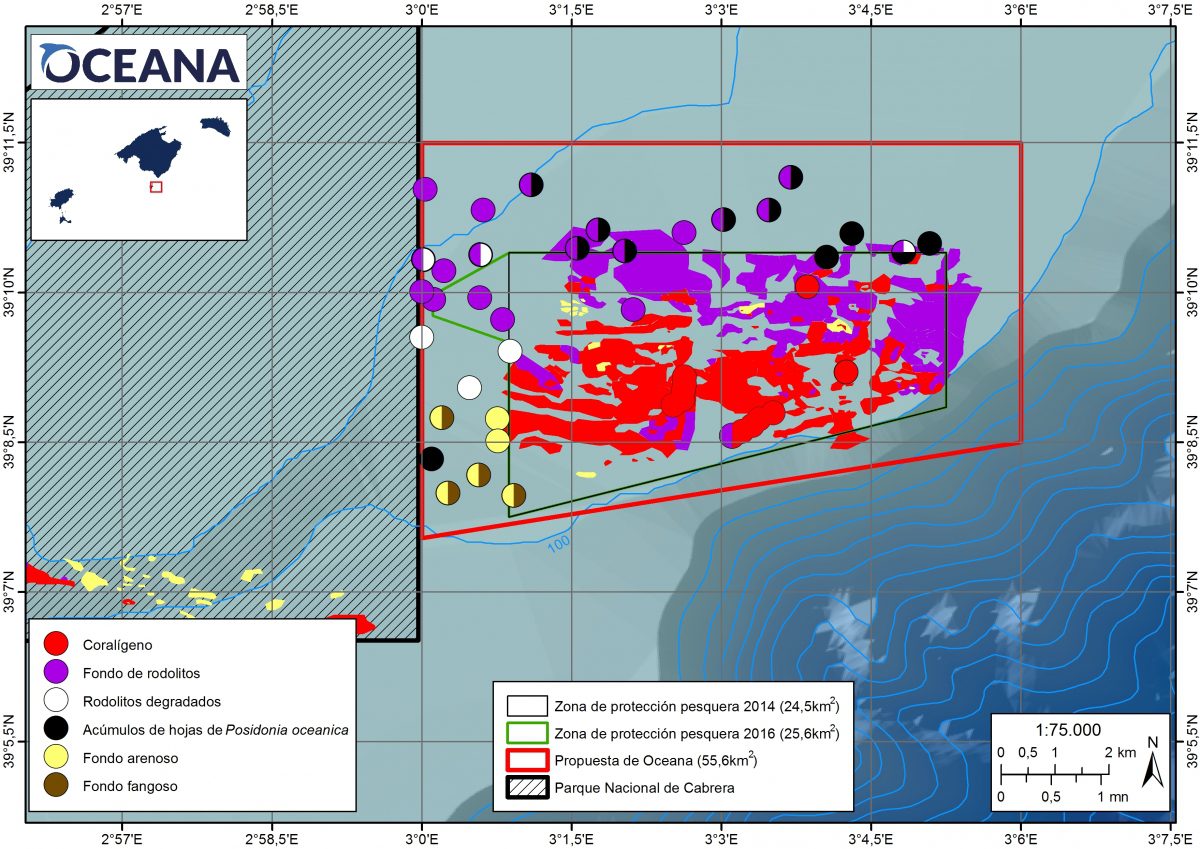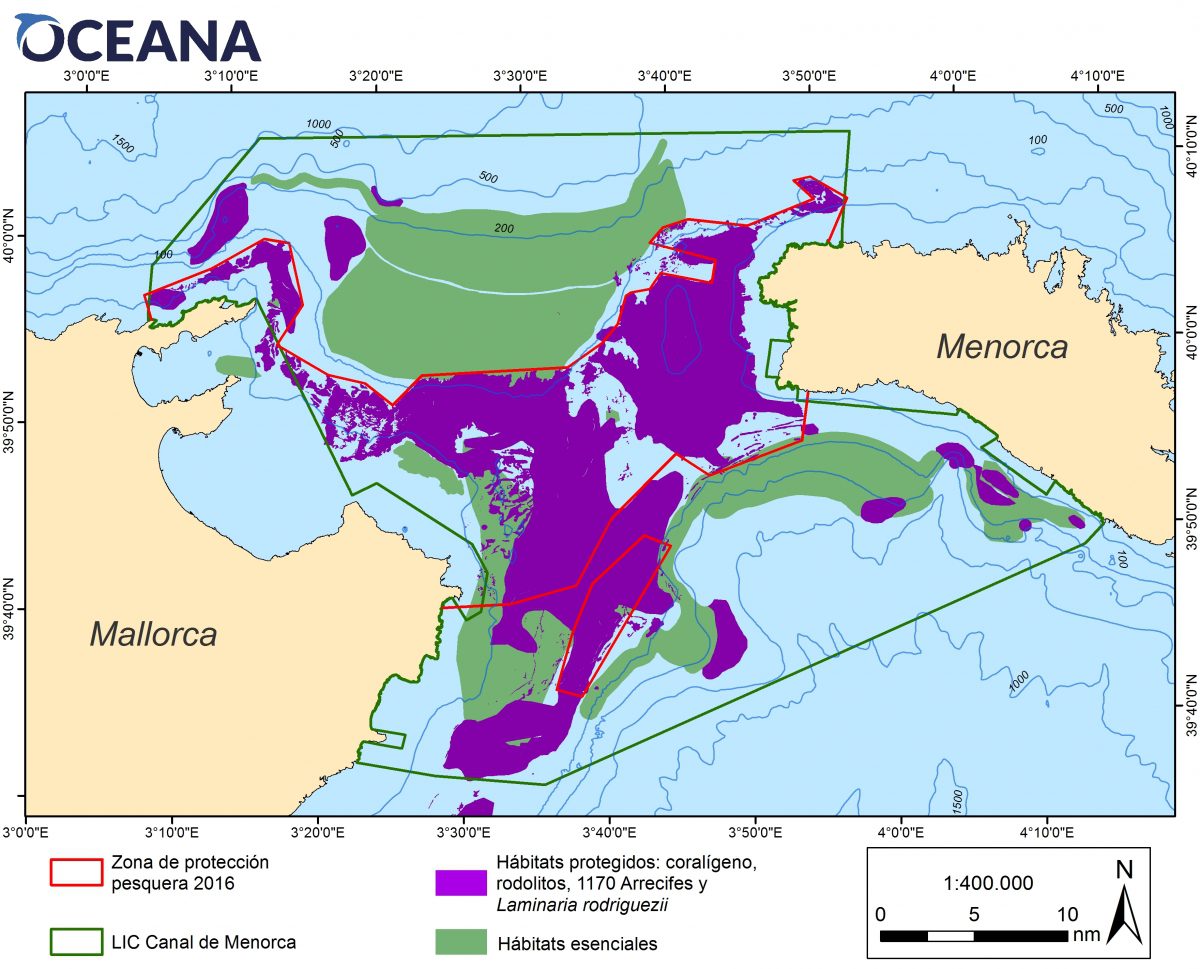1400 km2 in the Balearic Islands protected from destructive fishing
Oceana forces Spain to comply with EU legislation prohibiting bottom trawls and similar fishing gear over vulnerable habitats
Press Release Date: September 19, 2016
Location: Madrid
Contact:
Marta Madina | email: mmadina@oceana.org | tel.: Marta Madina
Oceana welcomes the creation of fishing protected areas in the Menorca Channel, and the modest expansion of another area to the east of Cabrera Archipelago National Park. These areas will allow the conservation of coralligenous formations and rhodolith beds, habitats formed by calcareous red algae in which many species feed and reproduce, and which are supposed to have been protected by law since 2006. The total protected area amounts to 1397 km2. For the last four years, Oceana has been campaigning for Spain to comply with EU legislation and to end the use of destructive fishing methods in the Menorca Channel.
“The ban on trawling and similar fishing methods in a zone between Mallorca and Menorca is a step towards the rational use of fisheries resources,” explains Ricardo Aguilar, director of Research for Oceana in Europe. “This decision, the result of a lengthy campaign for European law to be enforced, will allow the conservation of very vulnerable seabeds and will preserve habitats that are essential for fish and crustaceans. Oceana will continue pushing the Ministry to extend this prohibition to the entire Menorca Channel, since the area is recognised as a Site of Community Importance by the European Union and it includes essential and ‘protected’ seabeds that lie outside the newly declared area.”
 |
 |
In addition to the Menorca Channel, the Spanish government has also marginally extended the protected area in Fort d’en Moreu, a valuable coralligenous reef to the east of Cabrera where illegal trawling activity has been detected. Oceana has expressed its surprise at the revised area limits, which will leave an unprotected corridor barely 200 metres wide between the national park and the new area, where rhodolith beds have been documented. In fact, this area is included in the proposal by Oceana for the enlargement of Cabrera National Park, on the basis of its high ecological value.
The new ministerial order follows a similar decision in 2014 to preserve species and habitats of special interest on the summits of the Ausiàs March and Émile Baudot seamounts (Mallorca Channel) and also in Fort d’en Moreu. Oceana carried out an intense campaign in both cases, including at-sea research expeditions with an underwater robot, publishing and sending information to the authorities, and presenting proposals, formal objections and allegations in response to the drafts of the two ministerial orders.
More information: LIFE+ INDEMARES project: Channel of Menorca

